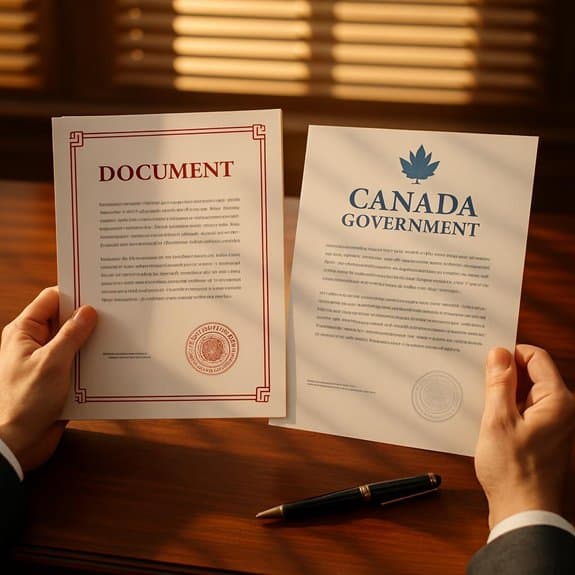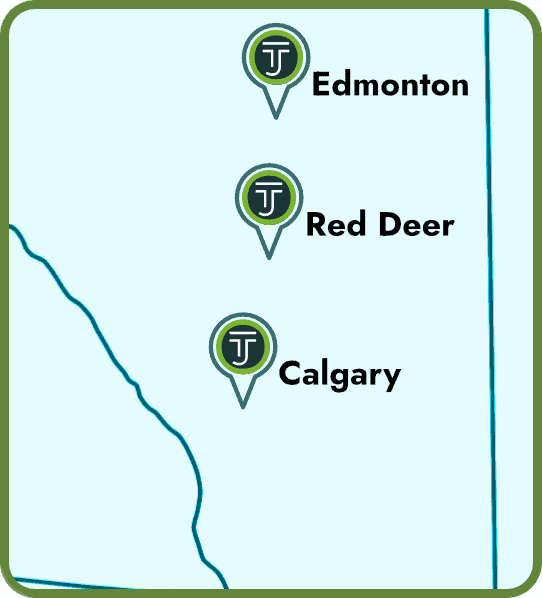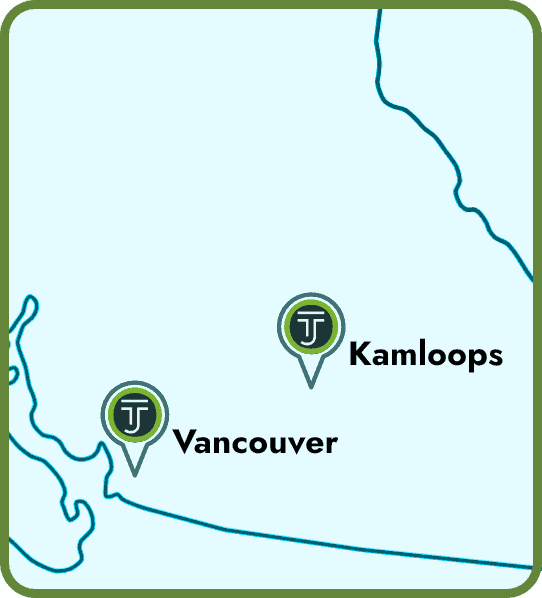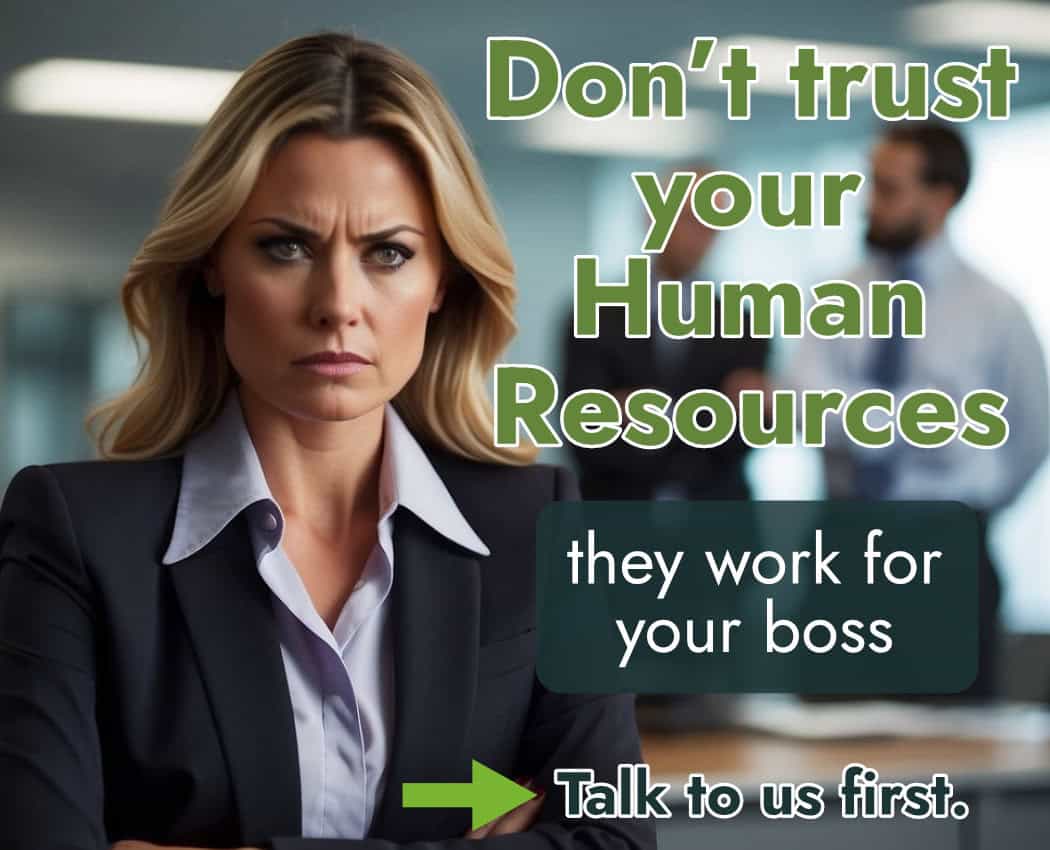
You can change your closed work permit to an open work permit through several pathways: applying for a Bridging Open Work Permit if you’ve submitted a permanent residence application, qualifying for a spousal open work permit through sponsorship, or obtaining protection as a vulnerable worker experiencing abuse. Each pathway has specific eligibility requirements and documentation needs, but none require starting completely from scratch with new employer restrictions. Understanding these options will help you navigate the most suitable shift process.
Understanding the Differences Between Closed and Open Work Permits
Before you can successfully shift from a closed to an open work permit, you must understand the fundamental differences between these two permit types.
A closed work permit restricts you to employment with a single, named employer at a specific location performing defined job duties. If you lose your job or want to change employers, you’ll need a new work permit, which typically requires a fresh job offer and Labour Market Impact Assessment (LMIA).
Conversely, an open work permit allows you to work for any employer in Canada without job-specific restrictions or LMIA requirements. This permit type provides significant employment flexibility, enabling you to switch jobs freely without applying for new permits.
Open work permits aren’t tied to particular employers, positions, or locations, making them considerably more versatile for your career mobility.
Bridging Open Work Permit for Permanent Residence Applicants
If you’ve applied for permanent residence through an economic immigration program, a Bridging Open Work Permit (BOWP) provides you with the flexibility to work for any employer while your permanent residency application processes.
You’re eligible for a BOWP if you’re currently in Canada with a valid work permit that’s set to expire within four months, and your permanent residence application has reached specific approval stages. This includes applications through Express Entry, Provincial Nominee Programs, or the Caregiver Program.
The BOWP eliminates the need for a Labour Market Impact Assessment and removes employer restrictions.
The BOWP offers unprecedented workplace freedom by removing both employer limitations and lengthy assessment requirements.
You can apply online through the Immigration, Refugees and Citizenship Canada portal. Processing times typically range from several weeks to a few months, so it’s essential you apply before your current permit expires to maintain your legal status.
Spousal Open Work Permit Options
What opportunities exist for spouses and partners to work freely in Canada?
If you’re married to or in a common-law relationship with a Canadian citizen or permanent resident, you can apply for a spousal open work permit. This option allows you to work for any employer without requiring a Labour Market Impact Assessment.
To qualify, you must be living in Canada with your sponsoring spouse and have an active sponsorship application for permanent residence. Your relationship must be genuine, and you’ll need to provide documentation proving your marriage or common-law partnership.
Additionally, if your partner holds certain temporary visas like a study permit or specific work permits, you might be eligible for a spousal open work permit through the International Mobility Program.
Open Work Permits for Vulnerable Workers Experiencing Abuse
Workers who face abuse or exploitation under employer-specific permits have a crucial protection mechanism available through open work permits designed specifically for vulnerable situations.
You can apply for this special permit without requiring an LMIA if you’re experiencing or at risk of physical, sexual, psychological, financial abuse, or reprisal from your employer.
You must be in Canada with a valid employer-specific permit and provide evidence supporting your abuse claim, such as reports from organizations or medical documentation.
IRCC prioritizes these applications and contacts applicants within five business days. The permit’s typically valid for twelve months, giving you time to find safe employment.
There’s no processing fee, and you’ll maintain your temporary resident status while moving away from your abusive employer.
International Mobility Program Pathways
While the Bridging Open Work Permit and spousal sponsorship programs offer well-known routes to employment flexibility, the International Mobility Program provides several additional pathways that don’t require a Labour Market Impact Assessment.
The program encompasses various agreements and initiatives designed to facilitate temporary foreign worker entry into Canada. You’ll find opportunities through reciprocal employment arrangements, significant benefit categories, and competitive advantage provisions.
Key International Mobility Program pathways include:
- Intra-company transferees – executives, managers, and specialized knowledge workers transferring within multinational companies
- International agreements – workers covered by NAFTA, CETA, or other trade agreements
- Significant benefit categories – entrepreneurs, self-employed persons, and workers bringing substantial economic, social, or cultural benefits
Each pathway has specific eligibility criteria, documentation requirements, and processing procedures that you must meet to qualify for an open work permit.
Steps to Apply for Your Open Work Permit
Once you’ve identified your eligibility pathway, submitting your open work permit application requires careful preparation and attention to detail.
You’ll need to gather supporting documents specific to your pathway, such as marriage certificates for spousal permits or permanent residence acknowledgment letters for bridging permits.
Complete the appropriate application forms through IRCC’s online portal or by paper submission. Pay the required processing fees, which vary by permit type.
Some applications, like those for vulnerable workers, are exempt from fees and receive priority processing within five business days.
Submit your application before your current permit expires to maintain legal status.
IRCC will contact you if additional documentation is needed during processing.
Required Documentation and Evidence
Success in obtaining your open work permit depends largely on providing the correct documentation that proves your eligibility for your chosen pathway. Each route requires specific evidence to demonstrate you meet the criteria.
For bridging open work permits, you’ll need proof that your permanent residence application has reached the required processing stage.
Spousal sponsorship applications require marriage certificates or proof of common-law relationships, plus evidence you’re living together in Canada.
Vulnerable workers must submit particularly detailed documentation:
- Detailed letter explaining the abuse or risk you’re experiencing with your current employer
- Supporting evidence from medical professionals, law enforcement, or social service organizations documenting the situation
- Employment records showing contract violations, unpaid wages, or unsafe working conditions
Additional documents include valid identification, current work permits, and any relevant correspondence with authorities regarding your situation.
Processing Times and Fees
Understanding the timeline and costs associated with your open work permit application helps you plan effectively and manage your expectations throughout the process.
Processing times vary greatly depending on your specific pathway to an open work permit. Bridging Open Work Permits typically process within 27-120 days, while spousal open work permits can take 4-6 months.
Applications for vulnerable workers receive priority processing, with IRCC contacting applicants within five business days.
Standard application fees range from $155-$255 for most open work permits. However, vulnerable worker applications are exempt from processing fees. You’ll also need to factor in biometric fees ($85) if required.
Processing times fluctuate based on application volume, completeness of your documentation, and current IRCC workload.
Submitting complete applications with all required supporting documents helps avoid delays and potential refusal.
Maintaining Your Legal Status During the Transition
While shifting from a closed to open work permit, you must maintain your temporary resident status to remain legally in Canada. Your work authorization ends when you lose your job, but your visitor status continues until your permit expires.
Your temporary resident status remains valid even after losing your job, providing crucial protection during the work permit transition period.
Here are essential steps to protect your legal status:
- Apply before expiration – Submit your new permit application while your current permit remains valid to avoid status gaps.
- Restore status if needed – If your permit expires during the changeover, you have 90 days to apply for status restoration along with your new permit.
- Monitor application progress – Keep track of processing times and maintain valid documentation throughout the entire process.
You can’t work until you receive your new open work permit, but maintaining legal status allows you to remain in Canada during processing.
How Canadian Currents Immigration Services Can Help
Steering through the complexities of changing from a closed to open work permit requires expert guidance to avoid costly mistakes and guarantee your application meets all requirements.
Canadian Currents Immigration Services (part of TJ Law Group with Taylor Janis Workplace Law) brings together experienced immigration lawyers, consultants, and paralegals with decades of combined expertise in immigration law. You’ll receive efficient, cost-effective legal services tailored to your specific situation.
Each team member works directly with you to understand your unique circumstances and determine the best pathway for your work permit change.
Whether you’re eligible for a Bridging Open Work Permit, spousal sponsorship, or protection as a vulnerable worker, the team guarantees your application achieves the best possible outcome while maintaining your legal status throughout the process.

We currently have three offices across Alberta — Edmonton, Calgary, and Red Deer. We serve the entire province of Alberta (and BC). We also have the infrastructure to work with any of our clients virtually — even the furthest regions of Alberta.
Call 1 (844) 224-0222 (toll free) to get routed to the best office for you or contact us online for general inquiries.
We also have a dedicated intake form to help you get the ball rolling. Our intake team will review your specific case and advise you on the next steps to take as well as what to expect moving forward.
Our offices are generally open 8:30 a.m.—5:00 p.m., Mon—Fri.

Our main hub for British Columbia is located in the heart of Vancouver. We also have a Kamloops Office for interior residents. That said, we serve the entire province of BC. We have the infrastructure to work with any of our clients virtually — even the furthest regions of British Columbia.
Call (604) 423-2646 [toll free 1-877-402-1002] to get routed to the best representative to serve you or contact us online for general inquiries.
We also have a dedicated intake form to help you get the ball rolling. Our intake team will review your specific case and advise you on the next steps to take as well as what to expect moving forward.
Our offices are generally open 8:30 a.m.—5:00 p.m., Mon—Fri.


Alfonso Chen
WORKPLACE LAWYER
Alfonso Chen is a civil litigator in our Vancouver office who can provide services in both Mandarin and English. He has appeared before and won cases in the Supreme Court of British Columbia, the Provincial Court of British Columbia, and numerous tribunals.
PRIVACY NOTICE: Any information you provide to our office — whether your personal information or employment/employer details — will be treated as strictly confidential and will not be disclosed to your employer or to any other third party. So, please be reassured that you can talk openly to our capable Intake Paralegals worry free. Fill out an Online Inquiry or call us now, your information will be in safe and helping hands.
The Legal Review Process by Taylor Janis Workplace Law
- Taylor Janis strives for high-quality, legally verified content.
- Content is meticulously researched and reviewed by our legal writers/proofers.
- Details are sourced from trusted legal sources like the Employment Standards Code.
- Each article is edited for accuracy, clarity, and relevance.
- If you find any incorrect information or discrepancies in legal facts, we kindly ask that you contact us with a correction to ensure accuracy.


